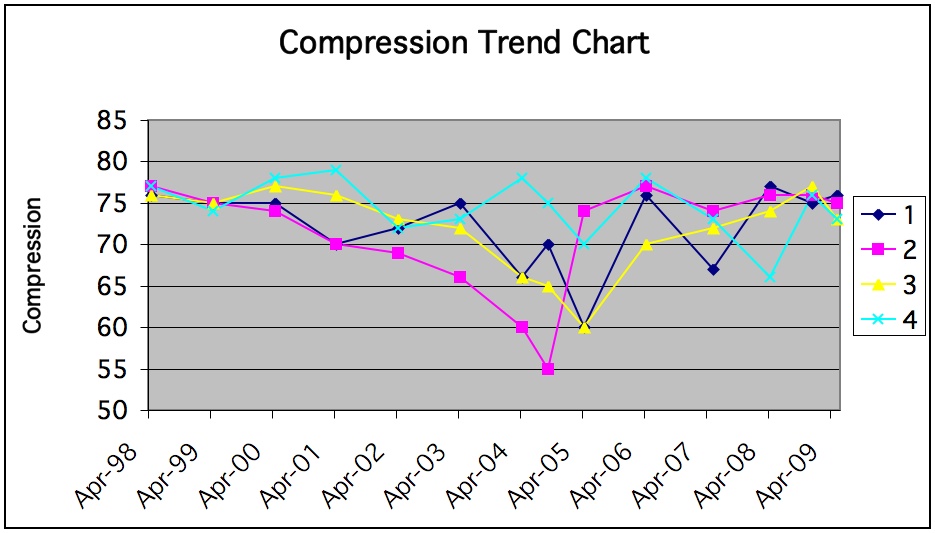 |
St. Louis Flying Club Newsletter - 23 May 2009 |
From The President - By Todd Michal

Dear Members,
Thanks to John, Mike McBride, Paul, and my son for helping with the annual and traffic monitor installation this year.
Thanks to Mike Russell for working on the insurance policy renewal. The quote from Avemco came in at $3,397 which was up $123 from last year even though the aircraft value was reduced from $60,280 to $51,700. We decided to shop around and Mike was able to get us a quote through Nationair of $1,582 for the same coverage. Nationair was able to find an underwriter that would consider us a partnership (typically only up to 5 partners) instead of a club which results in the considerable savings. The money saved here should offset the extra expenses from the annual.
Happy Takeoffs!
Todd
![]()
 Treasurer's Report - by Mike McBride
Treasurer's Report - by Mike McBride
The annual inspection activity significantly restricted flight time for the past month; we only had 1.7 flight hours on the plane, and 1.1 hours of that time was for maintenance and checkout. Retail fuel prices are TacAir are just under $5.00 per gallon, and with adjustments to our fuel consumption rate (down to 7.7 GPH, based upon recent flight experience) our flight rate is now $56 per hour.
Our treasury balance is about $200 in the red, while our adjusted treasury shows a $100 positive balance.The expenses for the annual have not yet been finalized; with replacements required for the flap position indicator and the tachometer, the costs are expected to exceed our $900 allocation. Once the annual costs have all been tallied and the new insurance policy paid, we will assess our funds and determine whether any action is required to increase treasury balances. The target would be to have the treasury at about zero following all expenses related to the annual and insurance. Immediate cash flow is not a concern, since that the escrow funds and the engine fund give us operating headroom.
Fly safely!
Mike
![]()
Maintenance - by John 
Annual Inspection - The annual inspection was completed on May 10. The following work/upgrades were completed during the annual inspection:
- Installed new seals and serviced the shimmy damper. Installed damper with new hardware.
- Installed new McCreary 6.00 x 6 4 ply tire and tube on LH wheel
- Replaced brake pads and rotors on LH and RH main gear
- Installed ATD-300 traffic monitor below the transponder
- Installed new Visual Instruments flap position indicator and sender.
- Installed new airbox seal retainer from Dynamic Propeller.
- Installed the Vacuum Source low vacuum warning switch
- Installed warning indicator light panel
- Serviced Battery
- Changed Oil and filter and added avblend
- Replaced ELT batteries (good now until Mar 2015)
- Greased LH and RH main wheel bearings.
Warning Light Panel - The warning light panel has 4 warning lights as follows:
- HIGH VOLTAGE - This light turns on in the event of an over-voltage condition and indicates the alternator shut down and you are now operating with battery power. The over-voltage sensor may be reset by turning the master switch off and back on again. If the warning light does not illuminate, normal alternator charging has resumed; however, if the light does illuminate again, a malfunction has occurred, and the flight should be terminated as soon as practical. Turn off unnecessary electrical items to prolong battery life. The warning light can be tested by momentarily turning off the ALT portion of the master switch and leaving the BAT portion turned on.
- ENGINE TEMP/VOLT - This warning light is connected to the Engine monitor and indicates high cylinder temperature or an out of voltage condition. When this light is on, look at the engine monitor and it will be blinking the parameter that is out of limits. If the light comes on during takeoff or climb, it may indicate the cylinder head temperature is over 450 deg. If this is the case, make sure the mixture is full rich (to help cool the cylinders) and then reduce the climb angle to increase engine cooling. If the light comes on during low engine RPM such as taxi or final approach, it probably indicates a low voltage condition since the alternator is not providing much power at low RPM. You are now operating mainly on battery power .
- LOW FUEL - This warning light is also connected to the Engine monitor and indicates the fuel level is below 9 gallons. The remaining fuel should provide approximately one hour of flight at cruise RPM
- LOW VACUUM - When final calibrated, this warning light will indicate low vacuum pressure. This light is currently inoperative.
Compression Test - The compression test results at the annual inspection were #1 at 76, #2 at 75, #3 at 73, and #4 at 73 as shown below:


Copyright © 1999, St. Louis Flying Club, All rights reserved. Last updated May 2009.